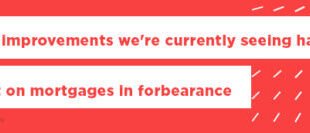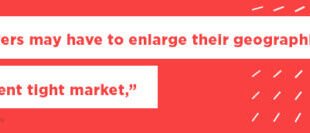Now that things are starting to look brighter, rates are rising to places they haven’t been in months. They’re being pushed up by optimism over vaccinations and the relief bill working its way through Congress – and by fears that an improving economy will spark inflation.
Zillow economist Matthew Speakman warns that “the days of all-time low rates may be a thing of the past.” But he’s also giving borrowers a reality check, reminding them that “mortgage rates remain very low by historical standards.” That means buyers can still get an excellent deal on loan for a new home, or on a refinance that will shrink monthly payments.
Mortgage rates are tagging behind the interest on Treasury bonds, which spiked earlier this week to the highest level since March. The pop in Treasury yields “came from positive retail sales numbers and the rebound in homebuilder sentiment, which buoyed bond investors’ outlook and drove up interest rates for home mortgages,” says George Ratiu, senior economist with Realtor.com.
But investors also fear that as the economy recovers, inflation will bubble up – “something that would reduce the value of bonds’ fixed-payments, and possibly lead the Federal Reserve to raise interest rates and place more upward pressure on yields and mortgage rates,” says Zillow’s Speakman.
Don’t worry about mortgage rates skyrocketing, but also don’t sit back and wait in hopes they’ll tumble again. And although homebuyers are facing multiple challenges right now – including high home prices and shortages of houses for sale – homeowners who haven’t refinanced yet have no good reasons for not going mortgage shopping.
Homebuilder confidence improves, despite high lumber prices
According to CNBC, buyer demand for newly built homes continues to surge, and that is keeping builder confidence high even as material prices climb.

“Lumber prices have been steadily rising this year and hit a record high in mid-February, adding thousands of dollars to the cost of a new home and causing some builders to abruptly halt projects at a time when inventories are already at all-time lows,” said NAHB Chairman Chuck Fowke, a custom homebuilder from Tampa, Florida. “Builders remain very focused on regulatory and other policy issues that could price out households seeking new homes in a tight market this year.”
While prices are a concern in both the new and existing home markets, there appears to be very little pullback in buyer demand.
“Demand conditions remain solid due to demographics, low mortgage rates and the suburban shift to lower-cost markets, but we expect to see some cooling in growth rates for residential construction in 2021 due to cost factors, supply chain issues and regulatory risks,” said the NAHB’s chief economist, Robert Dietz. “Some builders are at capacity and may not be able to expand production due to these headwinds.”
High-earning millennials are entering the luxury housing market
As reported by Forbes, a trend of first-time buyers driving more of the high-end housing market is likely to continue.

“For first time buyers, especially, the decline in the 30-year fixed rate from 3.65% in mid-March when the pandemic hit to a record-low of 2.65% on January 7, 2021, has provided unexpected leverage,” reports realtor. com. “For many buyers, lower rates allowed them to stretch their budgets and buy more expensive homes than they would have.”
Considering that in a healthy real estate year, there are about 6 million home sales, it is easy to see what a significant tailwind this demographic wave is projected to have on housing. Millennials are already comprising a dominant share of residential real estate transactions. Within this context, first-time buyers are boosting housing in 2021 and beyond, playing an important role in real estate markets across the country.
“Uncommonly low interest rates, the ascent of the Millennial homeowner and the prospect of working from anywhere are converging to shape a housing market unlike any other,” said Adam Contos, CEO of RE/MAX Holdings. “We could see mortgage rates begin to inch up soon, so now might be an ideal time for home buyers and sellers to make their move and take advantage of the favorable conditions.”
Weekly mortgage rate update
Mortgage rates move up! Due to the most recent stimulus economic spending has improved, but supply chain shortages are causing inflation downstream, resulting in higher mortgage rates. While there are multiple temporary factors driving up rates, the underlying economic fundamentals point to rates remaining in the low 3 percent range for the year.The Freddie Mac weekly survey shows the average rate for a 30-year fixed mortgage is 2.81%, which is 0.08 points higher than last week, and down 0.68 points from this time last year.



